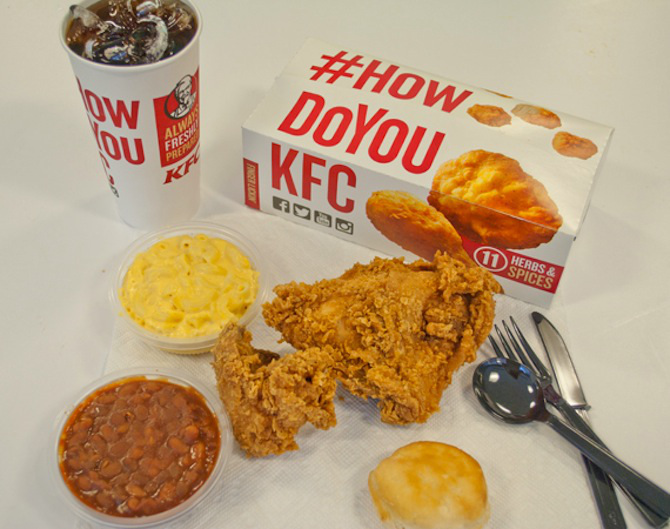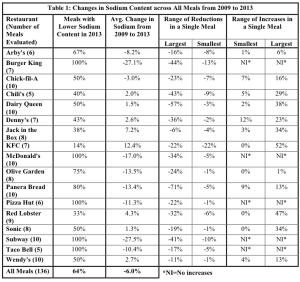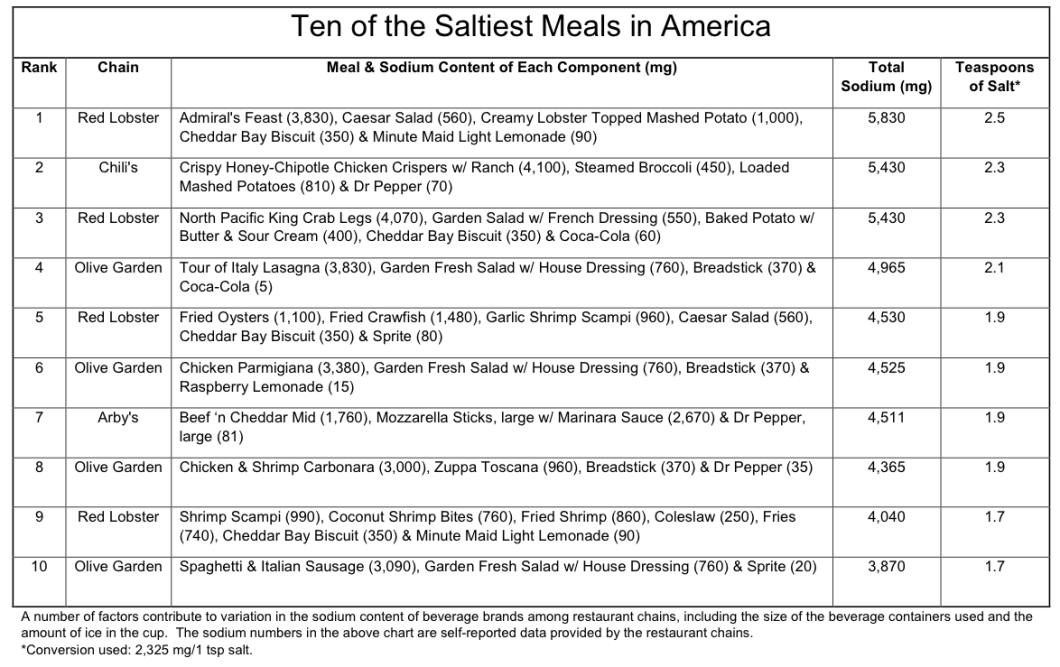While Other Restaurant Chains Cut Down On Sodium, KFC Meals Have Been Getting Saltier Image courtesy of Between 2009 and 2013, the sodium levels of this KFC meal actually increased by 11%, according to the CSPI survey.

Between 2009 and 2013, the sodium levels of this KFC meal actually increased by 11%, according to the CSPI survey.
A new survey [PDF‘\] from the Center for Science in the Public Interest looks at a total of 136 meals from the 17 restaurant chains to see whether the sodium levels in those meals changed between 2009 and 2013.

This table (click image to read) shows the extent to which each chain reduced or increased sodium content.
The CSPI study found that 79% of the adult meals surveyed were still above that 1,500mg line, with seven meals — mostly from family restaurants — containing more than three days’ worth of sodium.
In general, sodium levels have fallen, but not by much. According to the CSPI, the overall sodium reduction between 2009 and 2013 was only 6%, or 1.5% per year. Kids’ meals only dropped by 2.6% during the four-year period, and much of that was due to restaurants replacing french fries with fruit options.
The biggest names in fast food are also responsible for the biggest reductions in sodium. All of the meals surveyed at Burger King, McDonald’s, Subway, Pizza Hut, and Taco Bell demonstrated some level of sodium reduction.
Of that group, Subway’s efforts to cut salt were the most effective, reducing sodium levels nearly 28%, followed by Burger King at 27%. BK’s cheeseburger kids’ meal had the most substantial decrease in sodium (44%), going from 1,200mg to 840mg.
On the opposite end of the survey are those popular eateries where sodium levels actually went up.
While Wendy’s and Sonic were each able to reduce the sodium on 50% of their surveyed meals, increases in other menu items resulted in a net increases in sodium of 2.7% and 1.3%, respectively.
But that was nothing compared to KFC, which only reduced sodium on 14% of one of its seven meals in the CSPI survey. While the reduction for that particular meal was significant (22%), four of the six other meals had double-digit percentage increases in sodium, resulting in a whopping 12.4% net sodium increase for the chicken chain.
The biggest single meal sodium increase also came from KFC, where the kids’ meal with a grilled chicken drumstick, corn on the cob, string cheese, and Capri Sun juice drink resulted in a 52% increase from the 2009 version of the meal. The not-horrible news is that the sodium level for this meal is still under the 1,200mg daily intake figure recommended for children.
But the sodium levels at the family restaurants make most fast food look like heart-healthy options by comparison.
Look at the below chart of the 10 saltiest meals found in the survey, all of which have at least two days’ worth of sodium, and all but one of which comes from a sit-down family eatery:

The FDA puts no limits on sodium content in food, which some public health advocates believe is a mistake. The CSPI points to the restaurant industry’s slow and inconsistent efforts to reduce sodium as evidence that regulation is needed.
“For far too long, the FDA has relied on a voluntary, wait-and-see approach when it comes to reducing sodium in packaged and restaurant food,” said CSPI executive director Michael F. Jacobson. “If chains like KFC, Jack in the Box, and Red Lobster are actually raising sodium levels in some meals, FDA’s current approach clearly isn’t working.”
Want more consumer news? Visit our parent organization, Consumer Reports, for the latest on scams, recalls, and other consumer issues.

